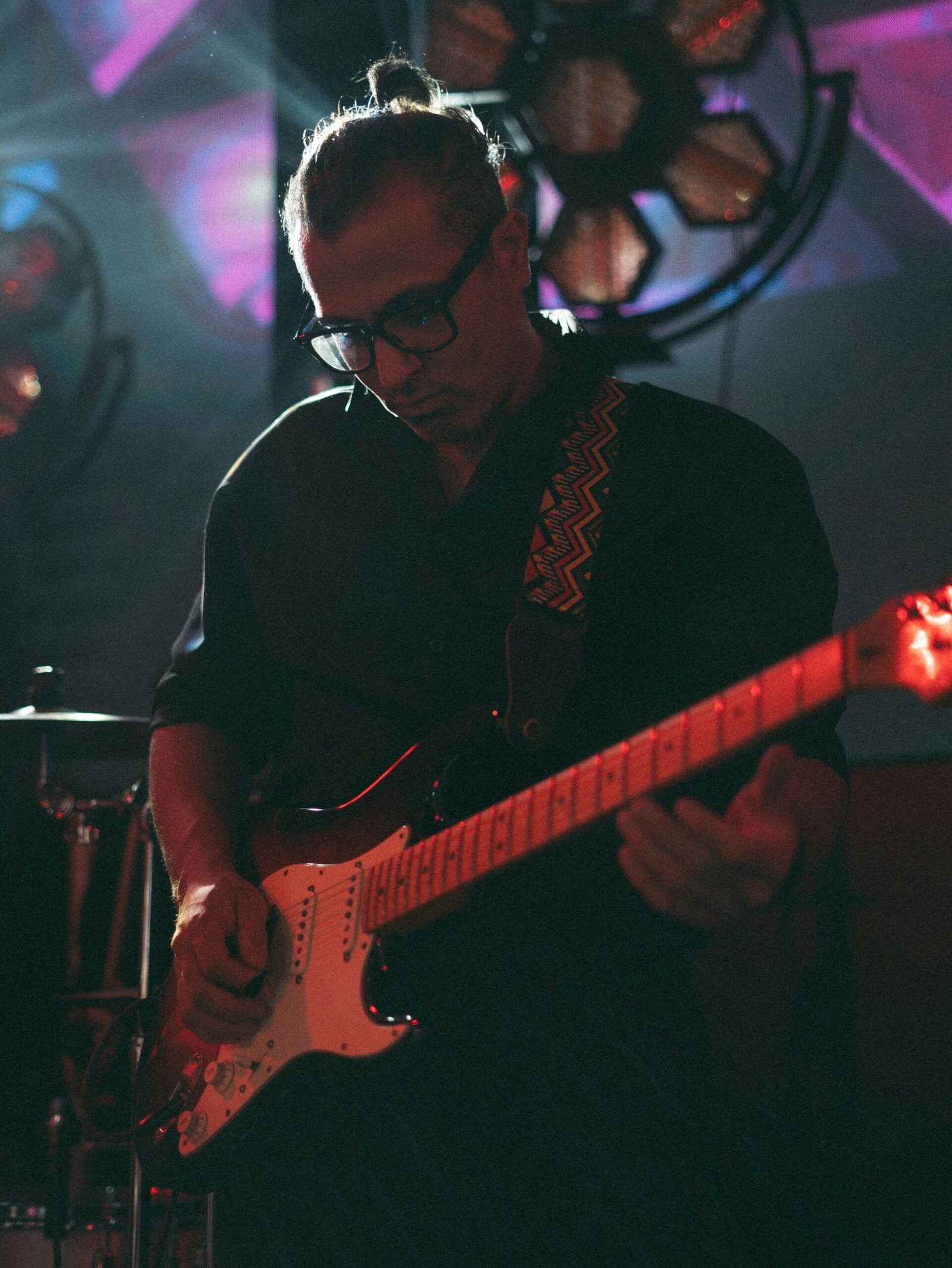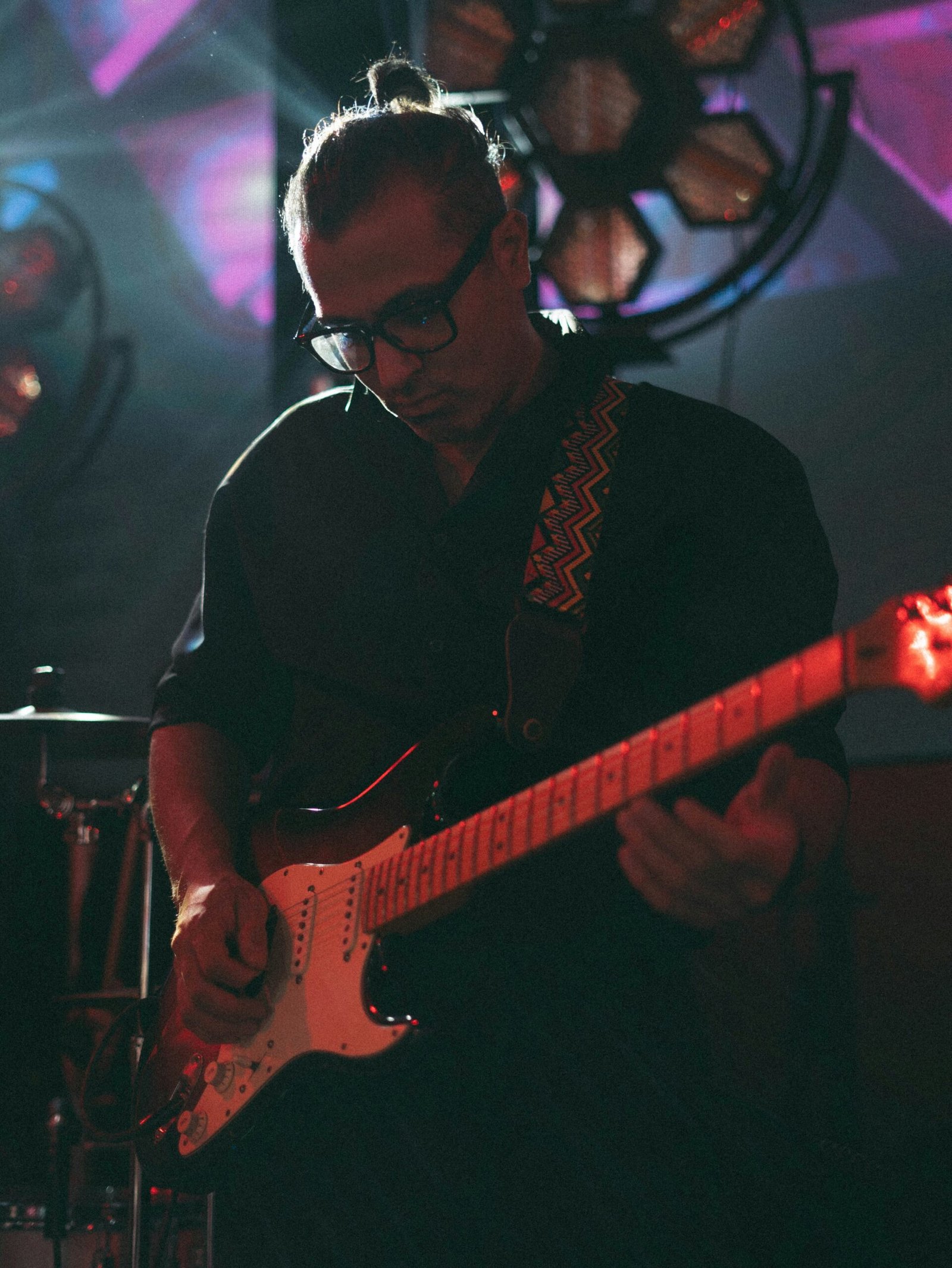
Introduction to Iranian Music and Dance
Iranian music and dance represent a vibrant tapestry woven from the threads of the country’s diverse cultural heritage, rich history, and societal values. These art forms are not merely entertainment; they carry profound significance, serving as channels for storytelling, cultural expression, and social cohesion. Over centuries, Iranian music and dance have evolved, reflecting both the passage of time and the myriad influences that have shaped the nation.
The historical roots of Iranian music trace back to ancient Persia, with evidence of musical practices extant as early as 3000 BC. Classical Persian music, known as “Gusheh,” is built on a modal system that incorporates various scales and tones, mirroring the intricacies of Persian poetry. These musical elements are often performed in communal gatherings, ceremonies, and celebrations, underscoring the communal aspect of Iranian culture.
Iranian dance, too, boasts a rich lineage, with traditional forms varying significantly across regions. Each dance style narrates stories of love, celebration, and the cyclical rhythms of life. For instance, the “Bandari” dance from the southern regions encapsulates the spirit of maritime trade, while the graceful movements of “Persian classical dance” often depict poetic themes or historical narratives. The visual aesthetics of these dances, combined with music, create a holistic experience rooted in the nation’s identity.
As Iran underwent transformations through historical events, including the Islamic Revolution, music and dance faced challenges that reshaped their expressions. Yet, despite these adversities, both art forms have persevered, continually adapting while preserving their core essence. Today, contemporary Iranian music and dance continue to flourish, embracing modern influences while retaining a deep connection to their historical and cultural origins.
The Roots of Iranian Music
Iran boasts a rich tapestry of traditional music styles that reflect its diverse cultural heritage. At the heart of this musical landscape is Persian classical music, a sophisticated art form with profound historical significance. Its origins can be traced back thousands of years, incorporating elements from ancient Persian, Arab, and Central Asian musical traditions. Persian classical music is characterized by complex compositions, intricate melodies, and deep emotional expression, often performed in intimate settings where the audience can experience the nuances of the performance.
Folk music also plays a vital role in Iranian musical culture, serving as a means of storytelling and community expression. Various regions of Iran have their own distinct folk styles, each incorporating local instruments, dialects, and cultural motifs. For instance, the music of Kurdistan features the spirited sounds of the ‘dotar,’ while the music of the Caspian Sea region is often accompanied by the ‘sorna’ and ‘tombak.’ These folk traditions convey the daily lives, struggles, and celebrations of the people, preserving historical narratives through song.
The unique scales and modes used in Iranian music further define its identity. The ‘dastgah’ system is a collection of modes that serves as the backbone of Persian classical music, each dastgah evoking different moods and emotions. Musicians employ a variety of traditional instruments such as the ‘setar’ (a four-stringed lute), ‘tar’ (a plucked string instrument), and the ‘ney’ (a reed flute) to create an intricate soundscape that resonates with listeners. The combination of unique instruments, modes, and cultural influences has culminated in a style of music that is distinctly Iranian, enriching both its artistic expression and social fabric.
The Role of Poetry in Music
The relationship between Persian poetry and music is one of profound significance, as the two art forms have coexisted harmoniously for centuries. Iran’s rich literary heritage plays a crucial role in shaping its musical traditions, with poetry often serving as the backbone of musical composition. Renowned poets such as Rumi, Hafez, and Saadi have not only penned verses that capture the essence of love, mysticism, and nature, but their works have also been essential in the creation of countless songs that resonate with deep emotional and cultural meaning.
The lyrical content found within Persian poetry is critical in conveying complex emotions and narratives. Many musicians set these poignant verses to melodies, infusing their performance with layers of meaning that enhance the auditory experience. The intertwining of poetic verse and musical notes creates an evocative space, inviting listeners to engage with the themes and sentiments expressed in the lyrics. As a result, the beauty of the poetry is often elevated through musical interpretation, forging a powerful connection between the audience and the performers.
This interplay between poetry and music is not merely incidental; instead, it reflects a broader cultural practice deeply entrenched in Iranian society. Musicians take pride in selecting poetry that resonates with personal experiences and collective stories, transforming traditional motifs into contemporary expressions. As a consequence, Persian music evolves while remaining anchored in its poetic roots, showcasing the enduring legacy of literary contributions to the musical landscape.
The role of poetry in Persian music is, therefore, a testament to the essential bond between these two art forms. This relationship not only preserves cultural heritage but also enriches the listening experience, ensuring that the legacy of Persian poetry remains vital and ever-evolving within the realm of music.
Traditional Instruments of Iran
Iranian music is deeply intertwined with its rich cultural heritage, and at the heart of this artistic expression lies a diverse array of traditional instruments that have been meticulously crafted over centuries. Among these instruments, the santur, tar, and setar stand out for their unique sounds and historical significance.
The santur is a hammered dulcimer made from wood, featuring a trapezoidal shape adorned with various strings stretched across its surface. Typically constructed with a walnut or mulberry body, the santur produces a delicate, resonant tone when struck with mallets. Musicians employ an intricate technique that involves varying the speed, force, and angle of the strikes, allowing for a broad range of musical expression. The santur plays a crucial role in Iranian classical music, often providing melodic foundations in ensemble performances.
Another prominent instrument is the tar, a long-necked lute notable for its distinctive sound that emanates from its double-bowl body. Traditionally made from walnut and adorned with intricate carvings, the tar features six strings, which are played by plucking with a plectrum. Its construction lends itself to a powerful yet nuanced tone, making it a favored choice for solo performances as well as in orchestras. The tar is emblematic of Persian music, serving as both a lead instrument and a vital accompaniment in various musical genres.
Lastly, the setar, meaning “three strings,” is a smaller lute-like instrument, heralded for its expressive capabilities. Crafted from various woods, including mulberry or walnut, the setar has a slender neck and a delicate soundboard that enhances its warm timbre. The technique employed to play the setar often involves intricate finger placement and plucking, which allows for intricate melodic lines and a profound emotive quality. This instrument holds a significant place in Persian poetry, frequently accompanying the recitation of traditional verses.
Through these traditional instruments, Iranian music reflects the complexities of its cultural tapestry, conveying deep emotional narratives and historical legacies that continue to resonate with audiences today.
Van and Gharā’ī: Exploring Specific Music Styles
Iranian music boasts a rich tapestry woven from various regional and cultural influences. Among the prominent styles are Van and Gharā’ī, each with its unique characteristics and contexts of performance. Van, predominantly recognized in Iranian classical music, is often associated with the vocal tradition. Its origins can be traced back to ancient Persia, where poetry and music were closely intertwined. Van is characterized by its intricate melodic structures, emotional depth, and extensive use of improvisation. Musicians typically perform Van in an intimate setting, allowing them to engage deeply with their audience, creating a profound emotional connection that transcends mere entertainment.
In contrast, Gharā’ī offers a different yet complementary musical experience. This unique style is primarily associated with the Persian classical tradition but has roots in the folk music of various regions in Iran. Gharā’ī is distinguished by its rhythmic complexity and vibrant melodies, often accompanied by traditional instruments such as the santur and tar. It is frequently performed at festive gatherings, weddings, and community celebrations, underscoring its role as a vital part of social and cultural life in Iran. The gaiety of Gharā’ī captivates listeners, encouraging participation through clapping or dancing, thereby enhancing the communal atmosphere.
The context in which these two styles are performed highlights their significance in Iranian culture. While Van may evoke introspection and contemplation, Gharā’ī is about collective joy and celebration. Both styles illustrate the depth and variety of Iranian music, showcasing the enduring connection between sound, emotion, and social interaction. Understanding Van and Gharā’ī thus provides insight into the intricate cultural landscape of Iran, inviting appreciation for the artistic traditions that have evolved over centuries.
The Significance of Dance in Iranian Culture
Dance occupies a pivotal role in Iranian culture, serving as a vibrant expression of identity, heritage, and artistry. Throughout history, various forms of dance have emerged from the diverse ethnic backgrounds and regions within Iran, each carrying unique attributes that reflect local customs, beliefs, and traditions. Persian classical dance, for instance, is characterized by its fluid movements and intricate gestures, often embodying themes of love, nature, and spirituality. This form of dance not only showcases the elegance of the dancer but also conveys deep emotional narratives that resonate with the audience.
In contrast, folk dances such as the Kurdish, Gilaki, and Luri styles demonstrate the rich cultural tapestry of Iran. Each folk dance is tied to specific regional contexts and social functions. For example, during festive occasions and weddings, folk dances bring communities together, fostering a sense of unity and celebration. Such dances are often performed in circles, promoting inclusiveness and shared joy among participants. The incorporation of traditional music adds to the beauty of these performances, heightening both the auditory and visual experiences.
Moreover, dance in Iran is not merely about entertainment; it serves as a medium for storytelling and cultural preservation. Each movement tells a story, preserving the legacy of past generations while allowing contemporary expression. Festivals such as Nowruz, the Persian New Year, prominently feature various dance forms, highlighting their integral role in ceremonies and communal gatherings. As these practices continue to evolve, they retain a profound significance, acting as conduits for expressing collective memories, aspirations, and values.
Through the exploration of diverse dance styles and their cultural significance, one can better appreciate the intricate web of history and identity that shapes Iranian society today. Dance remains a vibrant and essential aspect of life, reflecting the spirit and resilience of its people.
Modern Influences on Iranian Music and Dance
The landscape of Iranian music and dance has experienced significant transformation in recent years, primarily driven by modern influences and technological advancements. As traditional elements continue to coexist with contemporary styles, a fusion emerges that showcases the rich cultural tapestry of Iran. This blending of old and new not only invigorates the country’s artistic expressions but also serves as a reflection of ongoing societal changes.
Contemporary Iranian musicians and dancers are increasingly drawing upon a variety of global influences, incorporating genres such as pop, rock, and electronic music into their traditional practices. This amalgamation creates unique soundscapes that appeal to both younger audiences and those with a more classical background. For instance, Iranian pop artists often incorporate traditional instruments and motifs while employing modern production techniques that resonate with listeners far beyond Iran’s borders. This trend signifies a broader acceptance of diverse influences that characterize the evolution of Iranian musical and dance forms in the 21st century.
Furthermore, the proliferation of technology has profoundly impacted how music and dance are created and disseminated in Iran. The rise of social media platforms and digital streaming services allows artists to reach wider audiences than ever before, fostering a vibrant online community that celebrates innovation while respecting tradition. These tools facilitate collaboration between artists from different genres, enabling the emergence of new genres that challenge the conventions of Iranian music and dance.
This cultural shift is indicative of broader societal changes within Iran, reflecting the desires of a younger generation eager to explore new forms of expression while remaining grounded in their cultural heritage. As traditional Iranian music and dance continue to evolve through the infusion of contemporary elements, they offer a compelling narrative of resilience and adaptability amid an ever-changing world.
Experiencing Iranian Music and Dance: Festivals and Events
Iran is a country rich in cultural heritage, and its music and dance traditions are celebrated through numerous festivals and events throughout the year. These gatherings provide a unique opportunity to witness the beauty of Iranian arts, engage with local communities, and immerse oneself in the vibrant atmospheres created by an assortment of performances.
One of the most significant events is the Fajr International Music Festival, held annually in Tehran. This festival features a plethora of performances by renowned Iranian and international artists, showcasing various music genres, including traditional Persian, classical, and contemporary styles. Visitors can experience both orchestral and folk performances, making it an essential event for music enthusiasts.
In addition to the Fajr Festival, the annual Shiraz Arts Festival stands out for its focus on not only music but also dance and theater. This event encapsulates the essence of Iranian culture by presenting performances that engage the audience’s senses. Local and regional artists showcase their talents, emphasizing traditional dance forms that reflect the diverse cultural narratives of Iran.
On a more localized scale, the Nowruz celebrations, marking the Persian New Year, feature numerous community gatherings focused on music and dance. These events are characterized by lively performances that include traditional Iranian dances such as the Bandari and the Ghashogh Zani, along with folk music sessions. Such festivities are perfect for those looking to experience authentic Iranian culture and interact with locals.
Moreover, cities like Isfahan and Tabriz host vibrant arts festivals that highlight local musicians and dance troupes. Concerts in public spaces and performances in cultural centers provide further insights into the beautiful traditions of Iranian music and dance. Engaging with these festivals not only enriches one’s understanding of Iranian culture but also creates lasting memories illustrating the significance of these artistic expressions in Iranian life.
Conclusion: The Artistic Pulse of Iran
The cultural landscape of Iran is beautifully enriched by its music and dance, which together form an intricate tapestry reflecting the nation’s history, values, and emotions. The enduring legacy of these art forms resonates deeply within Iranian society, serving as a vital means of expression that transcends generations. Through the rhythms and melodies of Iran, one can trace the influences of diverse historical events, from ancient Persia to contemporary times, revealing the complexities of a nation proud of its heritage.
Preserving the art of Iranian music and dance is not only essential for maintaining cultural identity but also vital for fostering understanding and appreciation among global audiences. As this art form continues to evolve, it remains rooted in traditional practices that are interwoven with the cultural fabric of the Iranian people. By promoting these forms of artistic expression, we create opportunities for future generations to experience the richness of Iranian cultural heritage, encouraging them to engage with and learn from this profound art form.
Moreover, the importance of these traditions extends beyond national borders. Iranian music and dance have the potential to introduce international audiences to the depth of the country’s artistic expression, fostering cross-cultural dialogue and appreciation. Participating in events that showcase these art forms or leveraging platforms such as social media helps amplify voices that represent the beauty of Iran’s culture. With each rhythm played and each movement danced, the artistic pulse of Iran not only entertains but also educates, reminding us of the shared humanity that binds us across cultural divides.
In conclusion, it is crucial for both individuals and organizations to prioritize the preservation of Iranian music and dance. By actively engaging in the promotion of these art forms, we contribute to keeping the vibrant spirit of Iran alive, ensuring that its artistic legacy continues to flourish for generations to come.

